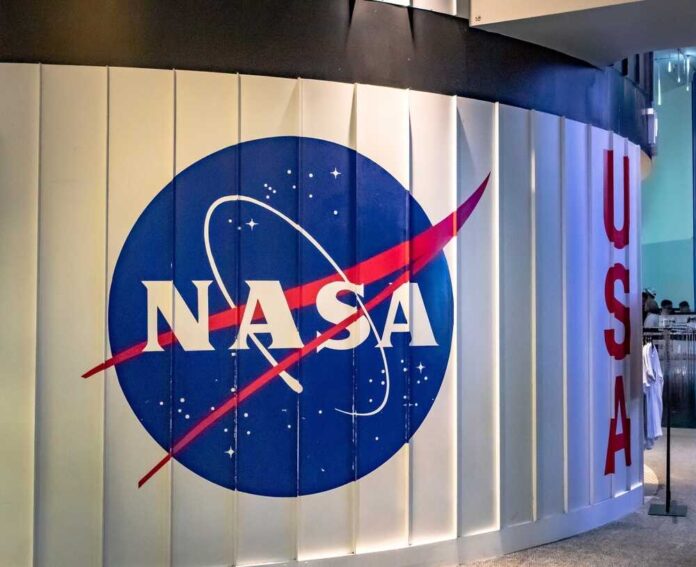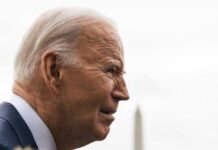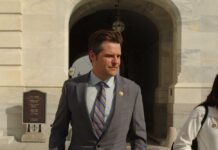
NASA’s future under Trump’s potential second term could see the agency scrapping its own rockets to focus on sending humans to Mars by 2028.
At a Glance
- Trump’s potential second term could bring major changes to NASA’s structure and priorities
- Jared Isaacman nominated as NASA administrator, with Elon Musk’s influence apparent
- Possible cancellation of Space Launch System and pivot towards private partnerships
- Ambitious goals include human missions to Moon and Mars by 2028
- Proposed consolidation of NASA centers to improve efficiency
Trump’s Vision for NASA: Out with the Old, In with the New
Hold onto your spacesuits, folks, because if Donald Trump gets another crack at the White House, NASA might just get the shake-up of the century. It seems our space agency has been stuck in a bureaucratic black hole, and Trump’s team is ready to blast it into a new orbit of innovation and efficiency. The plan? Ditch the bloated projects, streamline operations, and get humans to Mars faster than you can say “Make Space Great Again.”
First on the chopping block: NASA’s own Space Launch System rocket and possibly even the Orion spacecraft. Why? Because apparently, we’ve got private companies chomping at the bit to do the job better and cheaper. It’s like NASA’s been trying to win a race with a horse and buggy while SpaceX has been revving up a Ferrari.
New Leadership, New Direction
Trump’s not messing around with leadership either. He’s tapping Jared Isaacman, a billionaire who’s actually been to space, to take the helm as NASA administrator. And who’s whispering in Trump’s ear about all this? None other than Elon Musk himself. It’s like the space version of “The Apprentice,” and NASA’s old guard might just hear, “You’re fired!”
“The push toward more privatization of spaceflight is likely because the commercial space industry is more established now than it was eight years ago, at the outset of Trump’s first term” – Berger
But here’s where it gets really interesting. The Trump team is eyeing a complete overhaul of NASA’s structure. They’re talking about consolidating research centers, moving headquarters, and redesigning the entire Artemis lunar program. It’s like they’re playing cosmic Tetris with billion-dollar pieces, and they’re determined to make everything fit just right.
Efficiency: The Final Frontier
Now, some might say, “But what about all those NASA centers spread across the country? They create jobs!” Well, according to Mark R. Whittington, that’s part of the problem. He points out that this spread is more about garnering congressional support than actual efficiency. It’s classic pork-barrel politics, but in space!
“the reason NASA has several centers spread out across the country is that it increases congressional support for its programs. If a House member or senator is not moved by a love of science or beating the Chinese back to the moon, he or she might be motivated by the jobs and contracts created by a NASA center in their district or state. They will fight tooth and nail against closing such a source of votes.” – Mark R. Whittington
The Trump team’s solution? Consolidate, consolidate, consolidate. They’re proposing to merge Goddard and Ames Research Centers into Marshall Space Flight Center. It’s like they’re creating a space research super-center. But let’s be real, folks – this isn’t going to sit well with the politicians who’ve been milking these centers for votes. Expect some cosmic-level tantrums when they realize their space cash cow might be headed for the slaughterhouse.
The Mission: Make Space Exciting Again
But here’s the kicker – all this reshuffling and privatizing isn’t just about saving a buck. It’s about reigniting the public’s imagination. The Trump team wants NASA to have a clear, exciting mission that’ll make Americans look up at the stars again with wonder, not just shrug and go back to their smartphones.
“We are going back to the moon and on to Mars to advance the frontiers of science, create technology that will be useful in space and on Earth, access natural resources, create new industries, and enhance the political soft power and security of the United States and its allies.” – Mark R. Whittington
So, buckle up, space cadets. If Trump gets his way, NASA’s about to go from a lumbering government agency to a lean, mean, space-exploring machine. Will it work? Who knows. But one thing’s for sure – it won’t be boring. And in the grand scheme of things, maybe that’s exactly what NASA needs. After all, space is supposed to be the final frontier, not the final yawn.

























